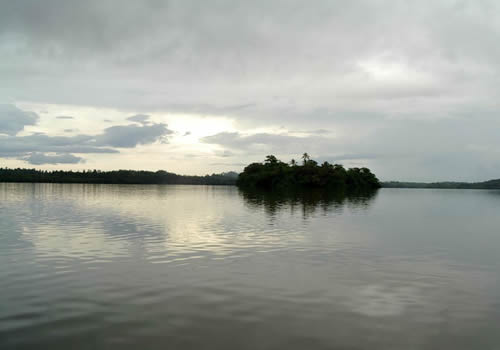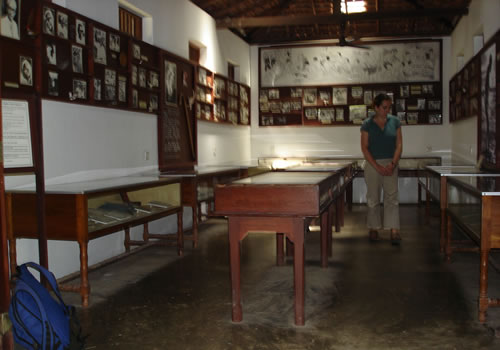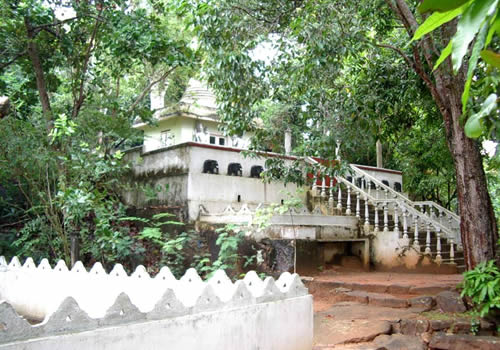Witness how the newborn turtles are being cared for until they are ready to be released back to the ocean. The wide sandy beaches that exist round the island of Sri Lanka are utilized by several of the marine turtles for laying their eggs. The commonest of these are the Loggerheads and the Leathery turtle while the green turtle is a less common visitor.
Koggala Lake
Attractive & tranquil Koggala lagoon is just a couple of kilometers away; dotted with rocky islands & fringed with mangroves. The lagoon is alive with birdlife & supply prawns in abundance. Motor boat trips & catamaran rides take you to the small islands in the lagoon. One of the island features a cinnamon plantation. The Buddhist temple on another island attracts many visitors on poya (full moon) days. And another island features Ananda Spice Garden.
Martin Wickramsinghe Folk Museum
Martin Wickramsinghe Folk Museum
Directly opposite the large Confifi Club Horizon hotel, the excellent Martin Wickramasinghe Folk Museum is inspired by the ideas of Martin Wickramasinghe, one of the most important Sinhalese writers of the twentieth century. A museum showcasing Sri Lanka's traditional culutrre was a dream of this cultural stalwart, though it wasn't realized until after his death. Wickramasinghe together with the giants of Sinhalese literary tradition of the era, W. A. Silva, Piyadasa Sirisena & Munidasa Kumaratunghe played an important role in asserting the values of the Sinhalese Buddhists at a time when the island was in danger of being swamped by European & Christian influences.
The house of Wickramasinghe (the only house spared from demolition to make way for the air base during the Second World War) & the excellent Folk Museum are set in an attractive seven acre garden with labeled trees. The museum houses fascinating exhibits from traditional Sri Lankan life: everything from catching a fish to chasing off malevolent spirits. The exhibits are interesting & well displayed, with information in English & Sinhalese.
- Fishing tools
- Religious items: Buddha statues
- Numerous utensils for treating coconuts
- Carriages (including a carriage pulled by an elephant).
- Numerous tools of traditional industries including rubber collection, toddy sapping & cinnamon gathering
- "Sand boards" trays of sand which were used to practice writing-the Sri Lankan equivalent of a blackboard.
- Agricultural tools, cute wooden & metal cow bells, wooden rattles & bows & arrows used to scare away bird from the paddy fields
- A colourful selection of Dance & costumes, puppets, an excellent collection kolam masks, puppets from the Ambalangoda area
- The museum also exhibits the highly respected Sinhalese writer's personal collection. His family home displays photographs & memorabilia, & some history about the area.
Around 5 km beyond Koggala lies one of the south's most absorbing temples, the Kataluwa Purvarama Mahavihara. The temple was built originally in the 13th century has some with late 19th century additions. The temple is renowned for its remarkable Kandyan-style paintings in the main shrine, dating from the late nineteenth century. The paintings of musicians & dancers & the European figures illustrating an interesting piece of social history. Some of the Jatake tales (episodes from the Buddha's series of 550 previous lives) scenes painted here are said to be 200 years old.





No comments:
Post a Comment